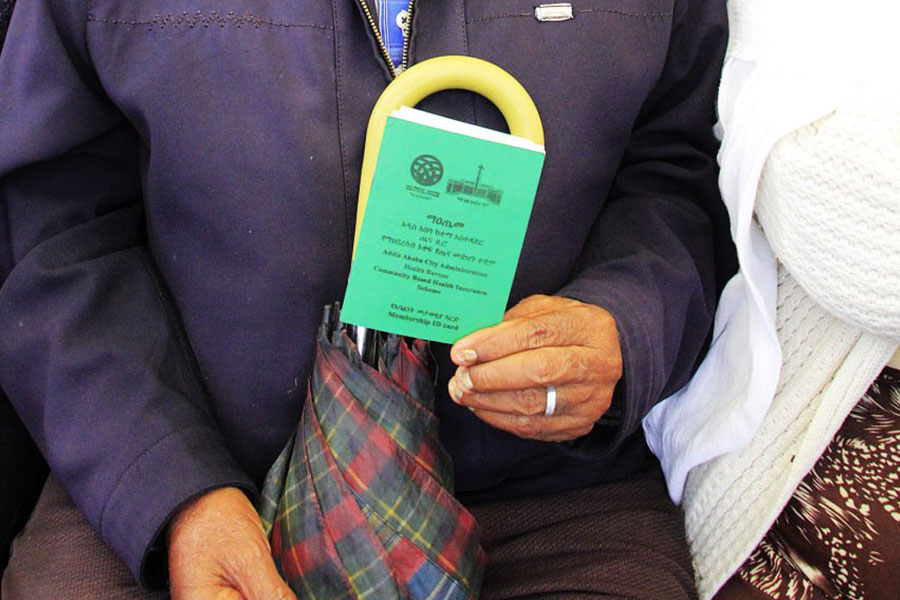
Radar | Jan 28,2023
Jul 2 , 2022
Recent history is showing that the digitisation of government services serves as a critical foundation for navigating not just development, but also crises such as armed conflict and pandemics, writes Ieva Zilioniene, consulting business lead at NRD Companies (www.nrdcompanies.com) and former deputy director general at Lithuania's Communications Regulation Authority.
The pandemic, armed conflicts and natural disasters have again brought the importance of digital services delivery to the forefront. While governments across the world are struggling to strengthen their public digital services, it is clear that changes or transformations related to digitalisation must start with a political will to change and the assessment of the digital maturity levels of existing public services.
Two of the most glaring (and contrasting) examples of the influence that digital transformation and crisis have on each other can be found in recent European history.
Take Estonia, a small Baltic state of just over a million people, which in 1991, after 50 years of foreign influence, with limited legacy technology systems and virtually no resources to speak of, began a transformation into what is now considered to be one of the world's most digital nations. It rose from the ashes of the cold war.
Out of necessity and with a healthy dose of political will, Estonia launched the Tiger Leap initiative in 1996, a country-wide IT infrastructure development program to catch up to the West. The initiative sought to update local IT infrastructure and establish computer skills as a priority in schools. And in 2001, Estonia created X-Road, a secure and interoperable open-source data exchange platform.
Considered to be the backbone of e-Estonia, X-Road allows the nation’s various public and private sector e-service information systems to link up and function in harmony. The results of the Estonian initiative are astonishing – 99pc of the government’s services are online. Over 3,000 different services are offered, saving three million working hours annually. Only two services are (currently) not offered online – getting married and divorced.
Not to say that the digital transformation in Estonia occurred without a hitch. In 2007, the country experienced a widespread cyber-attack. Originating from Russia, the attack simultaneously took offline fifty-eight Estonian websites, including those of the government, most newspapers and many banks. Although no information was lost during this event, Estonia had backed up important data outside of its borders before the attack.
Another story on digitisation is Ukraine. Recent world events such as the COVID-19 pandemic, the war in Ukraine, and its devastating humanitarian crisis have made it evident that the benefits of digitalisation of public services outweigh the challenges facing such a demanding undertaking.
Ukraine started its digital transformation efforts in 2014 and has since risen 18 places in the United Nations E-Government Development Index. The Ministry for Digital Transformation (MDT) was established in 2019 and has since created Diia, its flagship and modern platform that acts as a one-stop shop for public services. Diia, which interestingly enough was modelled after Estonia’s X-Road platform, offers over 70 different government services, including hosting digital passports and driving licenses that carry the identical legal status to the paper versions. Ukrainians, many of whom have been forced to relocate due to the Russian invasion, are now able to electronically and through an app, change their registered address without the need to appear in person.
Ukraine’s digitisation efforts that precede the start of the war also allow the government to stay in touch with its large population and rapidly assimilate new forms of assistance. It hosts live streams of Ukrainian TV and radio stations and allows the distribution of relief payments to employees and the self-employed in regions affected by the war, using an eSupport platform which was used during the pandemic. Because Diia already holds payroll, business registration and residence records, users can verify eligibility and apply for support directly through the app.
The country’s pre-war adoption of a digital government model is undoubtedly bearing fruit in these difficult times.
Such examples emphasise that governments often face enormous pressure to appease their constituents' expectations regarding service delivery in times of peace and crisis. Government reputation depends on its “digital appearance” – the way it is represented digitally through its portals, services, and interactions with citizens online. People expect to accomplish things easily when going digital and they expect continuity during times of war and natural disasters. The development of simple yet practical guidelines is crucial to help public sector representatives navigate the digitisation process of public services.
History has taught us that when it comes to government digital transformation, conflicts create opportunities and pre-emptive digital maturity helps navigate troubled waters.
PUBLISHED ON
Jul 02,2022 [ VOL
23 , NO
1157]

Radar | Jan 28,2023

Featured | Sep 06,2020

Radar | Jun 11,2024

Commentaries | Sep 19,2020

Commentaries | Jan 26,2019

Radar | Dec 17,2022

Radar | Apr 03,2023

Fortune News | Apr 10,2021

Agenda | Sep 08,2024

Featured | Apr 30,2021

Photo Gallery | 175199 Views | May 06,2019

Photo Gallery | 165424 Views | Apr 26,2019

Photo Gallery | 155732 Views | Oct 06,2021

My Opinion | 136783 Views | Aug 14,2021

Dec 22 , 2024 . By TIZITA SHEWAFERAW
Charged with transforming colossal state-owned enterprises into modern and competitiv...

Aug 18 , 2024 . By AKSAH ITALO
Although predictable Yonas Zerihun's job in the ride-hailing service is not immune to...

Jul 28 , 2024 . By TIZITA SHEWAFERAW
Unhabitual, perhaps too many, Samuel Gebreyohannes, 38, used to occasionally enjoy a couple of beers at breakfast. However, he recently swit...

Jul 13 , 2024 . By AKSAH ITALO
Investors who rely on tractors, trucks, and field vehicles for commuting, transporting commodities, and f...

Oct 18 , 2025
The political establishment, notably the ruling party and its top brass, has become p...

Oct 11 , 2025
Ladislas Farago, a roving Associated Press (AP) correspondent, arrived in Ethiopia in...

Oct 4 , 2025
Eyob Tekalegn (PhD) had been in the Governor's chair for only weeks when, on Septembe...

Sep 27 , 2025
Four years into an experiment with “shock therapy” in education, the national moo...

Oct 18 , 2025 . By NAHOM AYELE
In a sweeping reform that upends nearly a decade of uniform health insurance contribu...

Oct 18 , 2025 . By BEZAWIT HULUAGER
A bill that could transform the nutritional state sits in a limbo, even as the countr...

Oct 18 , 2025 . By SURAFEL MULUGETA
A long-planned directive to curb carbon emissions from fossil-fuel-powered vehicles h...

Oct 18 , 2025 . By BEZAWIT HULUAGER
Transaction advisors working with companies that hold over a quarter of a billion Bir...